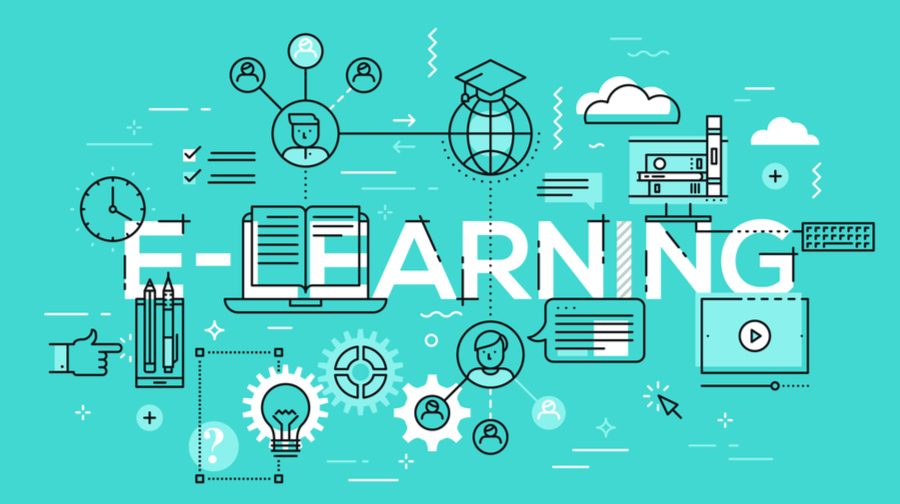
Technology shaping today’s learning methodologies

he most unique and inspiring fact about technology is that it has the potential to evolve, seemingly in endless directions and in quantum. We never know how an item, we routinely use might evolve and take another shape in another couple of years. Perhaps this is why the scope of technology is seemingly limitless and unbound by any character.
Whether it is medicine or aviation, the internet has not remained far behind in emphasizing how people and processes in these fields operate. It is not a surprise that technology has been able to shape how today’s learning methodologies are used to provide education globally.
CHANGING THE LEARNING SCENARIO: THE INTERNET OF THINGS
Remember a time when you used to learn the alphabet out of a textbook? Do you see kids these days doing the same? Or do you find a rhyme or poem playing on loop on a smartphone or tablet in their hands? While this is one of the more, short sighted ways in which technology has impacted our lives, until a few years back, it was hard to imagine how it would come to alter the way in which we learn something new. For example, it seems like only yesterday, when we used to learn about floppy disks in our school textbooks. Embracing the power of technology and the internet, we have a wagon full of options that depict how we are surrounded by numerous options when it comes to interactive learning. Video lectures, online chat groups, satellite classes, pre-recorded digital lessons are some of the ways in which learning has been digitised today. Owing to the digitisation of learning process through the power of technology and internet, students can take classes and lectures at their time of convenience and from any geographical location that suits them. The modern learning methodologies have been successful in overcoming some of the major shortcomings of traditional learning methods, such as face to face availability, uniqueness of each lecture, attendance, higher cost of face to face availability, shortcoming of reaching a wider audience, and lack of consistency. Technology continues to achieve its advantage over conventional modes of learning because it utilizes digital resources and infrastructure, which is not only easy to use, but is also widely available.
EXPLORING THE DIFFERENT ELEARNING METHODS
The current trends in the educational sector are a direct indication of the pervasiveness with which technology has pressed its superiority over conventional methods of learning. Here are some ways in which technological innovations are revolutionising education on a global scale:
- Online lectures: The availability of online classes and programs are a stark contrast to the traditional modes of learning which are found today. These online courses provide a major advantage of ‘anytime and anywhere’ approach to the learner. This makes it possible for them to undertake several courses at once as well or else, to add numerous value added skills to their experience.
- Mobile learning: An even greater enhancement over online courses is learning on-the-go through mobiles. The constant availability of these learning modules over a hand held device makes them easily available and thus, more convenient to access at one’s leisure. Therefore, no matter where you are, you are still connected with your course.
- Synchronous learning: what typically translates to ‘at the same time’, synchronous learning is best associated with learning that occurs in real time. This means that a learner is able to grab the education module at the same time when it is being taught by a teacher.
- Asynchronous learning: this could be understood as recorded lectures and on demand videos, which can be accessed by learners when they need to. This is usually available to more than one learner at a given time.
- Webinars: This allows an opportunity for experts from various fields to come together and broadcast a discussion or a knowledge session, using technology, which reaches a vast number of geographically dispersed students.
- AR/VR: This type of technology is largely successful in creating an interactive environment for learners, where they can engage and grasp more knowledge through a tailored program. Through simulation immersion and engaging gamification, knowledge can be broadcasted in a manner that shows a thumbs down to the conventional boundaries of classroom learning environment.
- Collaborative tools: Online learning through collaboration is now becoming a real thing. As a community learning reform, it helps an individual to gain knowledge through the experiences of others.

COMMON PITFALLS IN APPLYING ELEARNING:
Not all types of eLearning modules work well for every type of learner. Here are a few insights on how eLearning courses should not be:
- Linear: A linear course, which does not allow a learner to skip any part of the screen, is a major pitfall. This might make learners lose interest and confidence in the course because they might feel like they are not in control. While sometimes it is necessary, depending on the learning topic, it is not recommended for self-paced learning.
- Repetitive: When a course involves simply repeating the exact same information that can be found in a book, the learner will not get the added value of online learning.
- Non-interactive: Non-interactive courses, which do not engage the students, should be avoided. The key to a good eLearning process is engagement. Thus, if a course engages in an all pull strategy, it isn’t going to give much to a student who is looking to expand his knowledge. Quizzes, questions, scenarios, and cases are one way to make the learning process more interactive in this case.
ADVANTAGES OF USING TECHNOLOGY IN LEARNING:
FOR LEARNERS:
There are inarguably an ocean of advantages for using technology in learning. We thought that penning out a few would throw some light on why technology in learning is a clear winner:
- Access to multiple teachers: As compared to a classroom learning environment, where a single teacher is responsible to overlook a large number of students, the approach has now shifted. Now, a single student is in a position to engage with multiple sources of learning and perhaps, grasp more information than what is possible from a single teacher.
- Improving performance: By earning unique and singular attention to learning modules, students are far better placed to manage their performance and achieve a better position.
- Highly convenient: When we talk about eLearning processes, it is hard to rule out just how convenient it has become for learners to grasp information and progress in their field, as well as their ability to explore new fields and ideas that were not previously made available to them.
FOR EDUCATORS:
Usage of technology in learning improves the performance of the learner and this fact is a trigger enough for the educators to choose a better eLearning partner. That being said, here are a few other reasons why using technology in learning makes things better for educators:
- Extend the impact of your service: As educators step out of the conventional classroom boundary, they are able to explore a wider scope for making learning more impactful and meaningful for the students.
- Achieve personalized feedback: While classroom learning approach may not succeed in engaging all students, there are greater chances of achieving so with online learning and gaining insightful feedback from students.
- Remain more productive: Instead of spending your time divulging the same information over and over again, why not make use of technology solutions to make it better, maximizing time and efforts spent? This could largely free up time for undertaking activities which help in further learning and knowledge grasping.
- Keeping up with changes: As discoveries are made every day, with online learning, courses can be easily updated to stay in line with the times.
In order to make the best use of eLearning, organisations should work on implementing the infrastructure that fits their needs, and adding essential resources that can aid in eLearning. Designing learning modules to match the expected results of eLearning is another crucial target. This would involve making use of experienced teachers and an understanding of technology patterns.
Kashida aims to bridge the gap between students and teachers in this fast paced innovative environment. Reach out to us today for a quick tour of our services.

